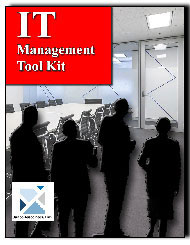Top 10 Cyber Security Management Best Practices for CIOs
Cyber Security management complex and the top 10 cyber security management best practices for CIOs and CSOs
 AI is used by “World Class” CIOs and CTOs to implement the top 10 cyber security best practices.
AI is used by “World Class” CIOs and CTOs to implement the top 10 cyber security best practices.
As AI is deployed in enterprises, cybersecurity management will be one of the first areas where AI solutions can be deployed that can provide an ROI the C-level management can measure.
The Best Practices that should be followed are:
- Centralize Malware Management - Utilize AI to centralize malware monitoring, incident responses, assessing and reporting operational impacts from endpoint to perimeter about ensuring activation and standard use, monitoring and reviewing malware activity, and most importantly, responding to issues.
Include all sources
- anti-malware applications,
- anti-virus,
- anti-trojan,
- spam filtering,
- web filtering and
- website scanners.
- Establish Boundary Control - Utilize AI to consolidate monitoring of access activity from boundary defenses including firewalls, routers, VPNs, and other network resources. Setup analysis of cross-correlating network flows with other operational data to identify suspicious behavior and potential security threats. Understand boundary definitions in each organization in terms of levels of risk, appropriate access grants, and monitoring interests.
- Centralize Provisioning and Authorization Management - Establish firm rules, alerts, and reporting to consolidate all provisioning and authorization management - monitor successful logins, subsequent secondary logins, and user/system activities to facilitate investigations. Eliminate shared credentials. Monitor failures in addition to successful accesses to monitor and investigate insider threats including privileged users and consultants.
- Implement Acceptable Use Policy - Publish Acceptable Use policies so that users better understand when, where, and how best to use and protect corporate assets and information. Create watch lists used to facilitate monitoring processes for the acceptable use of critical resources, user roles, and specific acceptable use policy violations. Include monitoring for after-hours and focus on non-typical uses.
- Build Security into Applications Starting in the Design Phase - Design security into applications. That includes both new applications and existing ones. Go beyond the perimeter, network, and host security defenses and include application platform monitoring, resource monitoring, web application defenses, and database activity monitoring. Incorporate web application firewalls (WAF) to inspect and filter HTTP traffic at the application layer to monitor web and mobile applications.
- Understand and implement all Compliance and Audit Requirements –understand applicable industry, regulatory, and legal obligations for security and risk management. Compliance reports and dashboards should be defined to support security analysts, internal and external auditors, and the CIO or CSO.
- Implement Monitoring and Reporting Processes - Define monitoring and reporting requirements including objectives, targets, capacity requirements, compliance reports, implementation, and workflow with key constituents before deployment of any technical tools.
- Manage security deployment and infrastructure processes - Manage the deployment in phases, maintain source activation and consistent delivery of event and log data, and refine the system continuously. On-going maintenance costs and growth plans need to be incorporated as part of the overall planning to obtain a true Total Cost of Ownership (TCO).
- Implement network and host defenses - Utilize AI to aggregate IDS/IPS alerting and filtering IDS/IPS false positives and facilitate incident management.
- Constantly validate network and system resource integrity - Manage the infrastructure, from deployed devices, systems, and applications to configuration, vulnerability, and patch details to assure and maintain operating integrity.



